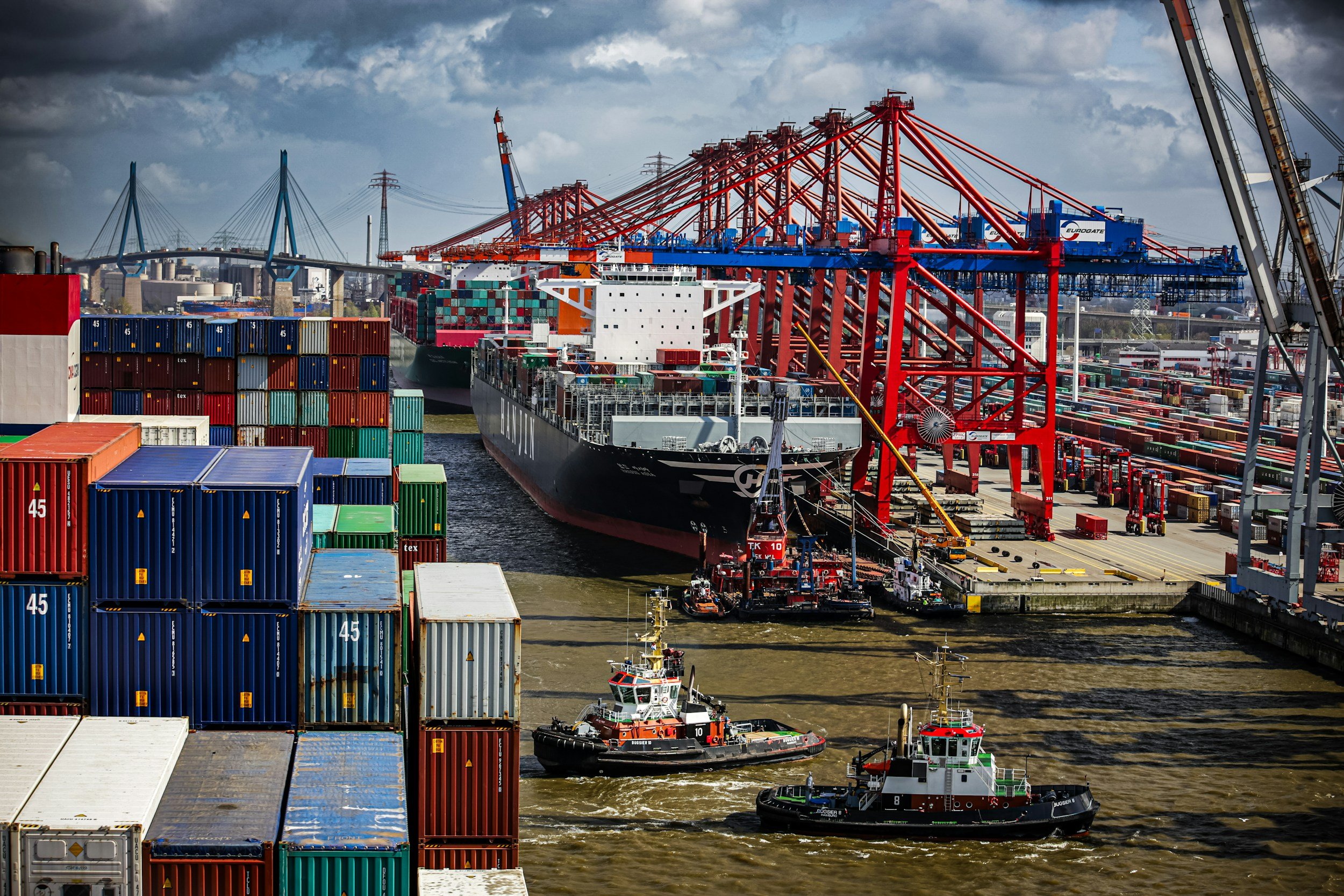
Retail Supply Chain Services – Enterprise Business Transformation
An Introduction To Our Retail Supply Chain Services
Modus Business Transformation Core Modules
Building, Driving and Sustaining your Business Transformation and embedding a 'Transformation As Usual' platform.

01 - Business Model Management - Manage and Adapt
Transform your Retail Supply Chain enterprise with the Business Model Management Hub in Modus ETP. Adapt, optimize, and grow your business effortlessly.
Key Features & Importance:
Business Model Canvas Integration: A dynamic tool to map and visualize the entire business model, including suppliers, logistics, and sales.
Value Chain Mapping: Comprehensive value chain modeling to track the flow from procurement to final delivery, identifying key dependencies.
Scenario Planning and Simulation: Allows for testing different business model scenarios, such as supply chain disruptions or new product launches.
Alignment with Strategic Goals: Ensures that all operational decisions within the supply chain align with broader business objectives, like cost-efficiency or sustainability.
Enhanced Decision-Making: Provides a clear view of the entire supply chain, allowing stakeholders to make informed decisions based on real-time data and predictive analytics.
Resilience in Disruptions: By enabling scenario modeling and contingency planning, the hub prepares retail supply chains to handle unexpected disruptions, like supplier shortages or logistics delays.
Benefits:
Optimized Supply Chain Efficiency: Streamlines operations by integrating processes and data, reducing waste, and improving the flow of goods from suppliers to shelves.
Cost Reduction: Enhances financial performance by identifying cost-saving opportunities across sourcing, logistics, and inventory management.
Faster Response to Market Changes: Agility in adapting the business model ensures quicker responses to market demands, allowing for better customer service and inventory turnover.
02 - The Value Chain Modeler - Manage and Adapt
Transform your Retail Supply Chain enterprise with the Value Chain Modeler in Modus ETP. Understand, optimize, and grow your business seamlessly.
Importance:
Holistic Supply Chain Visibility: Provides a full picture of all processes, from sourcing raw materials to final retail distribution, helping businesses manage and optimize each segment.
Proactive Risk Management: By simulating potential disruptions, the value chain modeler helps businesses anticipate risks and create contingency plans, increasing resilience.
Operational Efficiency: Identifies inefficiencies and redundancies within the supply chain, driving optimization of processes and resource use.
Key Features:
End-to-End Value Chain Mapping: Provides a comprehensive view of the entire supply chain, from procurement to delivery, ensuring transparency at each stage.
Dynamic Process Visualization: Offers real-time visualization of the flow of goods, services, and information across the value chain, helping identify bottlenecks and inefficiencies.
Scenario Analysis: Enables testing of different "what-if" scenarios, such as changes in demand, supplier disruptions, or logistical constraints, to assess their impact on the supply chain.
Benefits:
Improved Supply Chain Agility: Quickly adapt to changes in demand, market conditions, or supplier issues, ensuring smooth operation and minimizing downtime.
Enhanced Efficiency: Streamlines processes by eliminating bottlenecks and optimizing workflows, leading to cost savings and faster delivery times.
Risk Mitigation: By modeling and adapting to different scenarios, businesses can minimize the impact of supply chain disruptions, improving overall resilience.

03 - The Operating Model - Organize and Sustain
Transform your retail supply chain enterprise with the Operating Model in Modus ETP. Organize, sustain, and optimize your operations for ongoing success.
Key Features & Importance:
Defined Process Framework: Provides a structured approach to organizing supply chain processes, from sourcing and procurement to distribution and retail operations.
Real-Time Operating Model: Tracks and monitors live operations, ensuring that the current state of the supply chain is always visible and up-to-date.
Integrated Performance Metrics: Includes key performance indicators (KPIs) for monitoring efficiency, cost-effectiveness, and delivery times across all supply chain stages.
Operational Consistency: Ensures that all supply chain functions from supplier management to retail fulfillment—are aligned and operating under a unified framework, promoting consistency across the business.
Sustainability in Operations: Embeds sustainable practices, such as optimizing resource use and reducing waste, to ensure long-term operational efficiency and environmental responsibility.
Strategic Alignment: Aligns day-to-day operations with broader business strategies, ensuring that supply chain activities support overall company goals, such as cost savings or customer satisfaction.
Benefits:
Optimized Efficiency: Streamlines supply chain processes, reducing redundancies and improving the flow of goods, information, and resources, leading to lower operational costs.
Sustained Performance: Embeds a framework for continuous improvement, ensuring that supply chain performance remains high even as business scales or market conditions evolve.
Increased Agility: Enables quick adjustments to the operating model in response to changes in demand, supply, or logistics, minimizing disruptions and improving response times.
04 - The Transformation Assets and Portfolio Module - Discover and Transform
The Transformation Assets and Portfolio Module, a core part of the Modus Enterprise Transformation Platform (ETP), helps retail enterprises streamline operations and achieve their transformation goals. It provides a library of templates and methods for a structured, efficient approach to execution.
Importance:
Comprehensive Oversight: Provides full visibility into ongoing transformation efforts, enabling businesses to prioritize key initiatives and track progress across the supply chain.
Streamlined Transformation: Centralizes the management of all transformation assets, reducing duplication of efforts and ensuring consistency in execution.
Risk Management: Facilitates better risk management by enabling scenario planning and monitoring key milestones, ensuring timely interventions when needed.
Benefits:
Accelerated Transformation: Speeds up transformation initiatives by providing predefined tools and frameworks, allowing retail supply chain enterprises to implement changes quickly and efficiently.
Resource Optimization: Ensures efficient use of resources by managing project timelines and avoiding duplication, leading to cost savings and better project delivery.
Enhanced Decision-Making: Offers real-time data and insights into project progress, helping leadership make informed decisions to keep transformations on track.
Key Features:
Centralized Asset Repository: Houses all transformation tools, templates, methodologies, and best practices for quick access and consistent application across supply chain initiatives.
Portfolio Management: Tracks and manages a portfolio of transformation projects, providing real-time visibility into progress, resource allocation, and milestones.
Scenario Planning and Forecasting: Enables detailed scenario analysis to forecast outcomes and evaluate the impact of proposed changes on the supply chain.

05 - Organizational Change Management - Unite and Thrive
Transform your retail supply chain enterprise with Organizational Change Management in Modus ETP. Unite, thrive, and achieve your change goals with confidence.
Key Features & Benefits:
Structured Change Methodology: Provides a standardized framework for managing organizational changes, from planning to execution, ensuring consistent practices across the supply chain.
Role-Based Change Adoption: Aligns changes with specific roles and responsibilities, ensuring that employees across various functions from warehouse staff to retail managers are well-prepared.
Integrated Communication Tools: Facilitates effective communication through built-in channels, ensuring timely updates and clear messaging throughout the transformation process.
Smooth Transitions: Reduces resistance to change by involving employees in the process, providing training, and ensuring they understand the benefits, leading to faster and smoother transitions.
Improved Operational Efficiency: Ensures that changes, such as system upgrades or new processes, are adopted efficiently, leading to improvements in overall supply chain performance.
Sustained Change: Embeds change management practices within the organization, ensuring that changes are not only implemented but also sustained over the long term, supporting ongoing transformation efforts.
Importance:
Minimizing Disruption: Ensures that changes, such as new technologies or process improvements, are introduced smoothly without disrupting day-to-day operations across the supply chain.
Employee Buy-In and Adoption: Engages employees at all levels of the supply chain, ensuring they understand and are equipped to embrace changes, leading to more successful transformation outcomes.
Coordinated Change Management: Enables the seamless management of complex transformations, especially when multiple changes are being rolled out across various supply chain functions and locations.
06 - Engagement Hub - Share and Guide
Transform your retail supply chain enterprise with the Engagement Hub in Modus ETP. Centralize communication, stay informed, and guide your teams through successful transformations.
Importance:
Improved Communication Flow: Ensures clear and consistent communication across all levels of the supply chain, preventing miscommunication or delays in decision-making.
Enhanced Collaboration: Facilitates teamwork by allowing different supply chain functions (e.g., logistics, warehousing, retail) to work together efficiently and share insights in real time.
Stakeholder Alignment: Keeps all stakeholders—internal teams and external partners such as suppliers—informed and aligned with the supply chain strategy, reducing confusion and errors.
Key Features:
Centralized Communication Platform: Provides a single hub for sharing updates, guidelines, and key information across all supply chain locations and teams.
Collaborative Tools: Enables seamless collaboration between different departments—procurement, logistics, inventory, and retail—by providing shared access to data, documents, and schedules.
Real-Time Updates and Alerts: Sends real-time notifications and alerts to keep teams informed about critical supply chain events, such as shipment delays or stock shortages.
Benefits:
Increased Operational Efficiency: By centralizing communication and enabling collaboration, the Engagement Hub reduces operational silos, improving workflow efficiency across the supply chain.
Faster Issue Resolution: Real-time alerts and updates allow teams to address potential issues, such as stock-outs or delivery delays, more quickly, minimizing disruptions.
Enhanced Stakeholder Engagement: Ensures that all employees and partners are actively involved in supply chain processes, leading to better coordination and execution of tasks.
-

Transformation As Usual Capability Model
-

Individual and Team Capability Development



